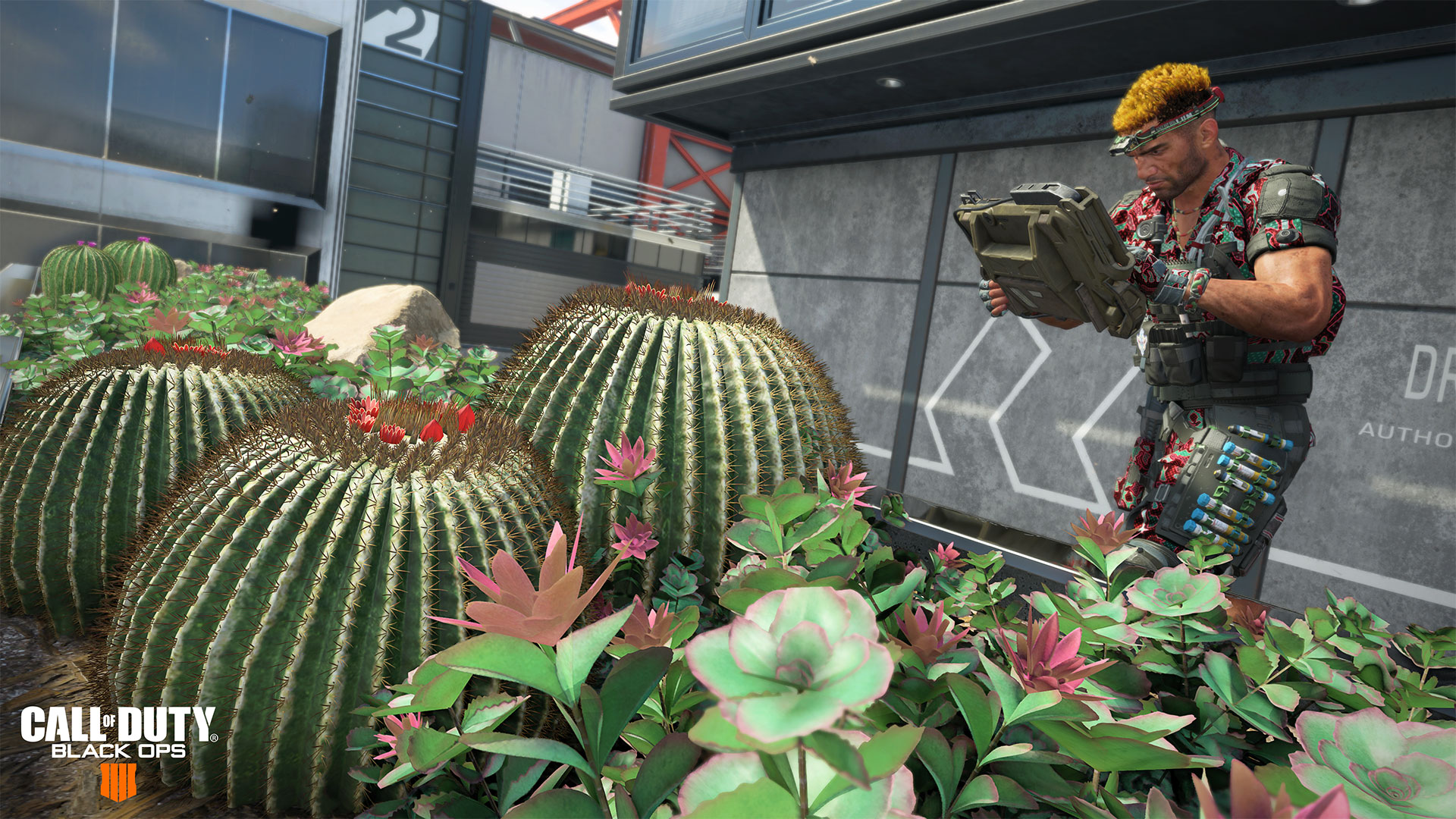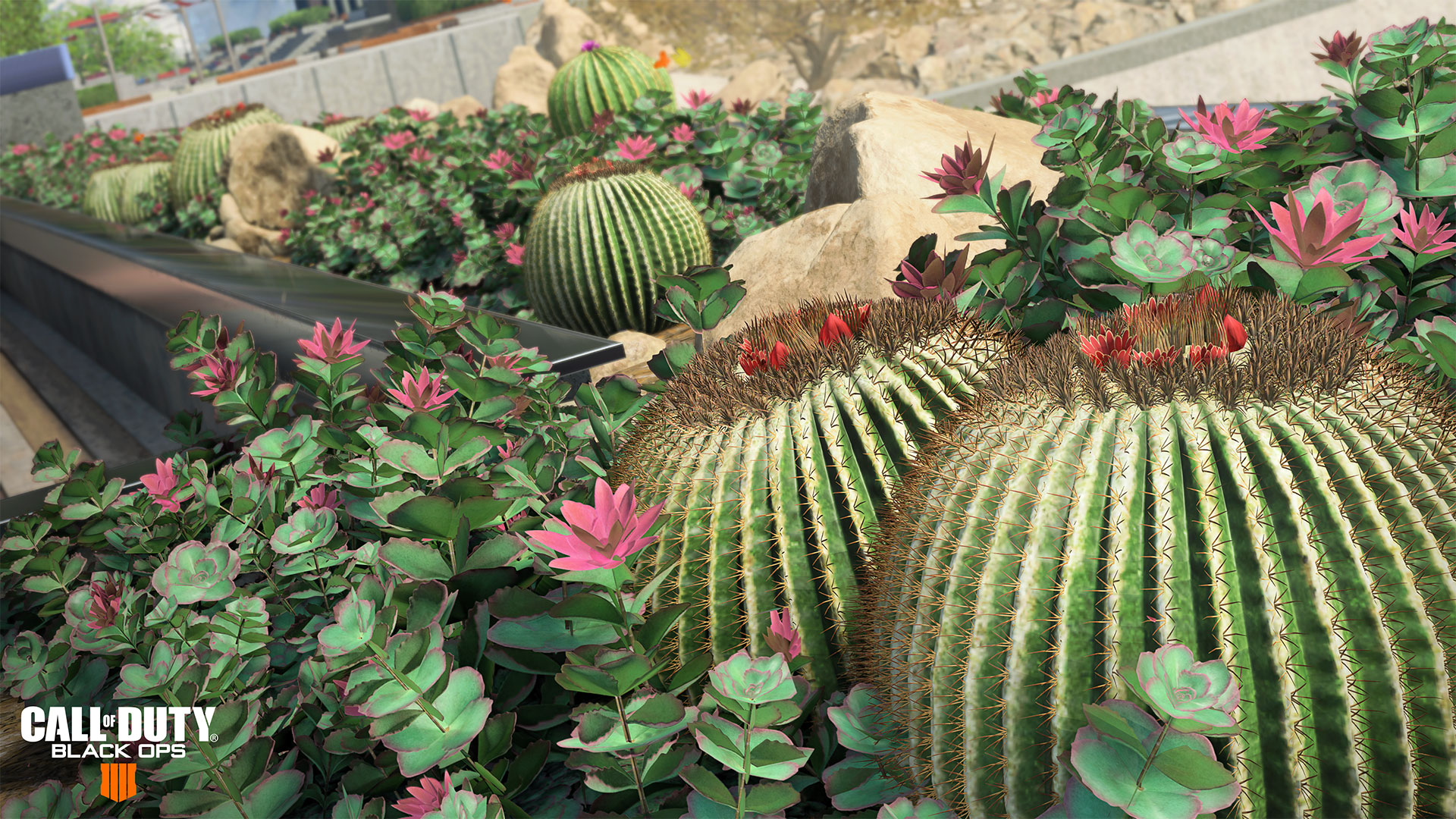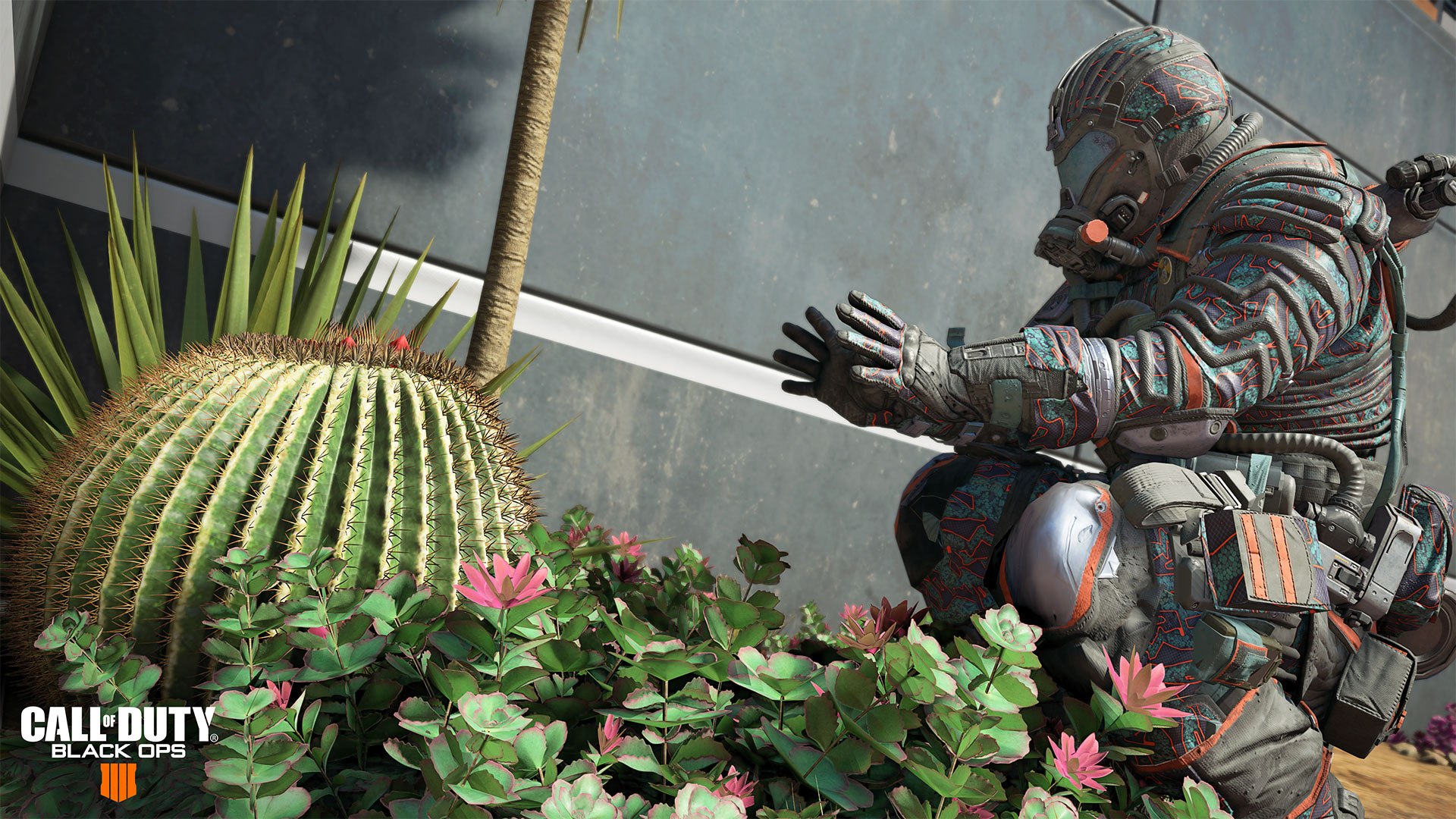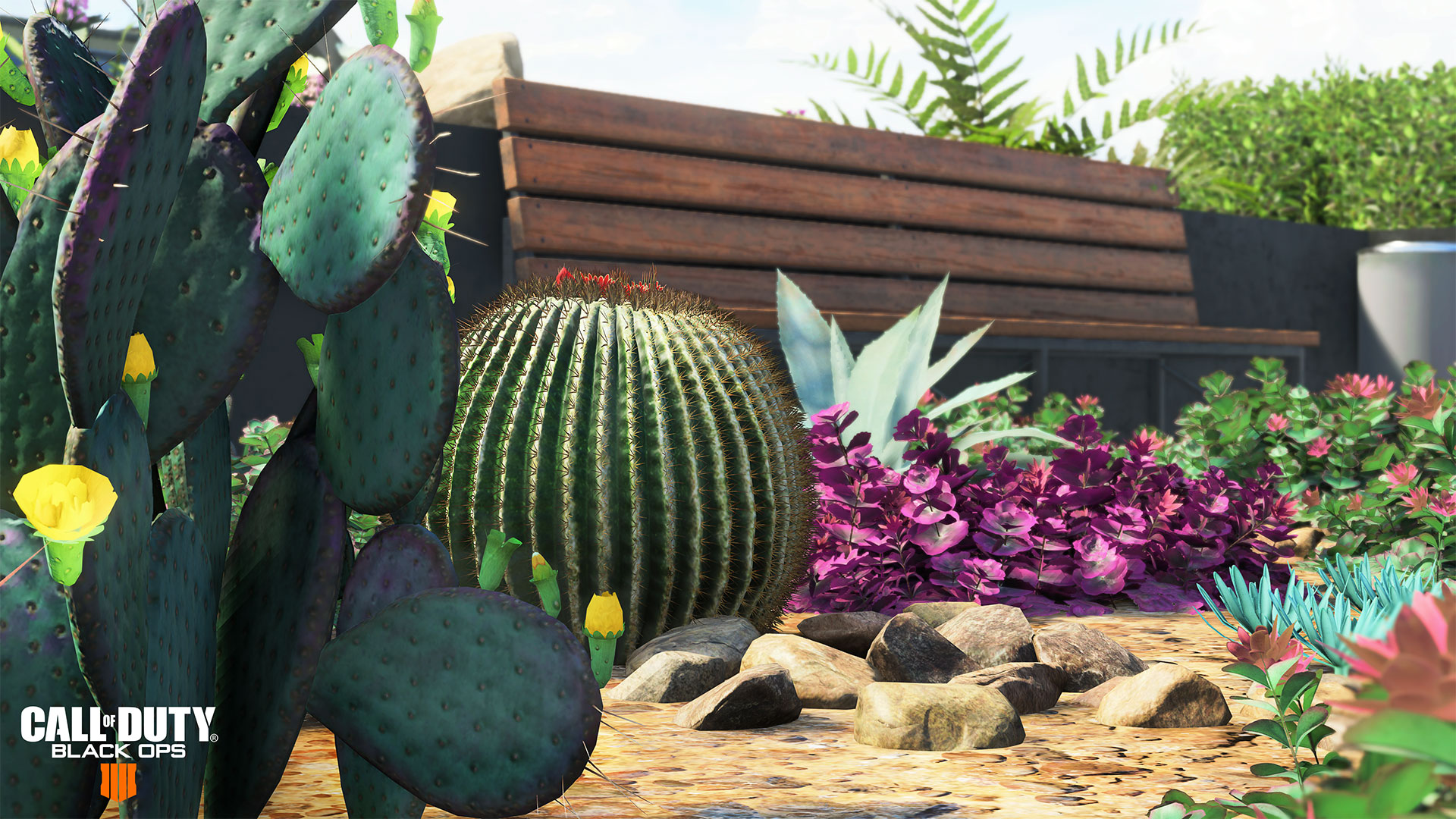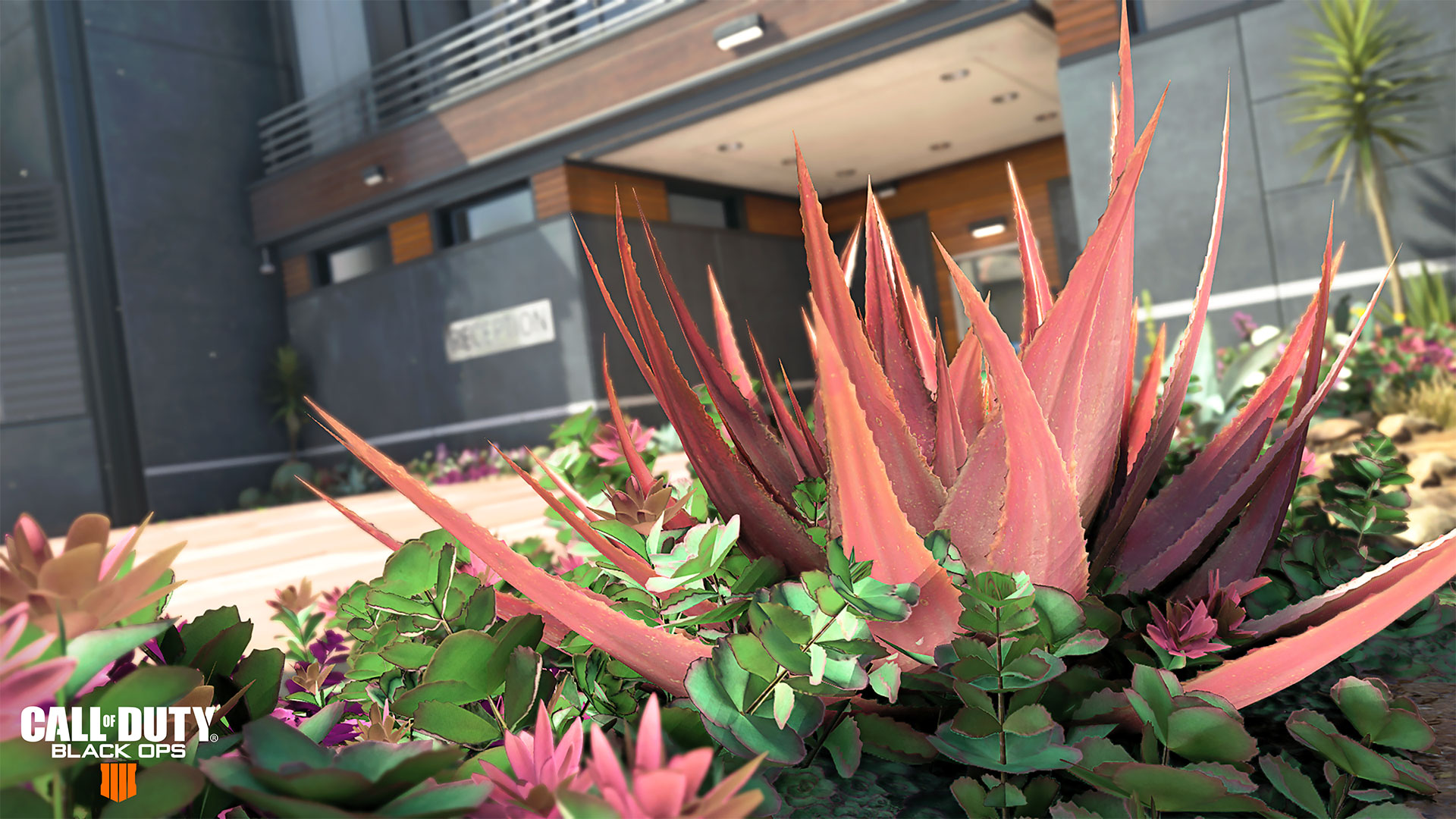How do you create a believable map for Black Ops 4? By a complex but subtle layering of areas with a variety of objects and scenery that creates a complete environment. Designed to blend seamlessly with more highly-trafficked thoroughfares, it falls to Treyarch’s talented teams of artists and level designers to create a tapestry of color, with the goal of adding more legitimacy to the overall environment across a map.
As an example, and in celebration of National Cactus Day (May 10), we put away our Hades light machine guns, and donned our horticultural hats, taking a relaxing stroll through the succulent and cactus planters dotted along the southern perimeter of the Arsenal map, near the reception area. Joining us for this expedition is Treyarch’s Associate Art Director, Shaun Bell.
Activision Games Blog: Thanks for joining us on this tour. We’re viewing one of the raised planters where groupings of sedums and fishhook barrel cacti (Ferocactus wislizenii) are nestled together. Please talk us through the process of creating a piece of art that will act as scenery.
Shaun Bell: We curate a list of plants that are indigenous to the location of the map. From there, we create style guides which include a collection of our own images that give us an idea of how we want the final image to look. Afterwards, the environment team looks at our existing images to achieve the desired look.
AGB: How did you seek inspiration for your scenic placement?
SB: Map placement depends on both the environment and the gameplay. It has to be somewhere that makes sense for the map and to that location. And, we also want to make sure that plants, especially larger plants work well in how they impact gameplay, like how it could provide cover.
AGB: Describe the research work when it comes to sourcing flora and fauna.
SB: Arsenal takes place in Texas, so for everything in that environment, we ask ourselves, “What is indigenous to this location?” We follow that rule for buildings, agricultural exports, license plates, and even foliage. We do an extensive dive into the location, so we can bring authenticity to the development process. Also, we want to make sure that the map is set apart and stands out, compared to the other maps in the game. We use various inspirations to determine the indigenous plant life. So for this particular environment, we looked at the Prickly Pear [cacti], Agave, and Mesquite [trees].
AGB: For prop artists that have a particular specialization (for example, plants), does it help to have a background in that specialization (for example, horticulture)?
SB: The plants in the game are created by environment artists with a particularly keen eye for detail, mostly because plants have translucent properties that can be tricky to nail. The plants have to be small from a (GPU) performance standpoint, but also look real and authentic as plants, both on their own and within the larger setting of the particular map.
AGB: How long did it take to “plant up” the gardens across Arsenal?
SB: It took about a month from initial planning to finalizing the plants.
AGB: Were there any unintended or odd consequences when placing, and then testing the planter scenery? Or was it relatively easy to place?
SB: One thing that we can encounter during the development process is scaling. When you look at a picture, it’s difficult to get a sense of scale. It’s not until you place a plant in the map that you realize how big or small it is compared to other things in the map. Gameplay is always first, and we don’t want to unintentionally obstruct lines of sight or negatively impact gameplay because of a large plant.
AGB: We would assume that “success” for a prop-artist and designer occurs when the finished design looks unassuming, fits in with the aesthetic, creates a “real world” look, is actually designed to add believability, and is (paradoxically) “actively overlooked” by the player because it’s so believable. Would you agree?
SB: Creating plants must be done just right because everyone knows what a plant looks like – and if something isn’t quite right, it will immediately stand out. It’s a lot about color and lighting. We look at the material level in order to make sure the shadows are correct. Sometimes the game engine can create a harsher shadow than intended which can make things look unnatural. So, we tweak and tune to find the right balance.
AGB: What does a successful planting mean to you?
SB: Plant life is vital to making the environment come to life. We want to paint this picture of this person going through a map and all of the elements are accurate to that environment. For Arsenal, if you’ve never been to Texas, we want to make sure going through this map feels like Texas.
AGB: What are some of your favorite and/or successful artistry in this or past Black Ops games?
SB: For me, Blackout for sure. The plant life in Blackout is tremendously diverse because the map is huge. Our intention is to take the player on a journey throughout the map and the environment plays a huge part in that. Typically, with Multiplayer maps, you are in one location. For Blackout, you are in multiple places that are combined in one big map. So, it posed a fun challenge for us to create that.
AGB: Thank you for your time.
For more intel about Call of Duty: Black Ops 4, be sure to visit CallofDuty.com/blackops4 and follow @CallofDuty and @Treyarch on Twitter.
For more information on Activision games, follow @Activision on Twitter, Facebook, and Instagram.

